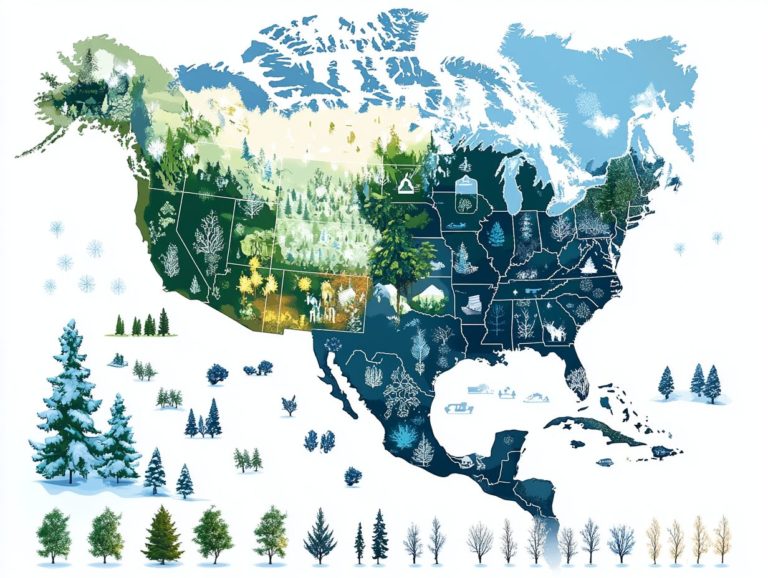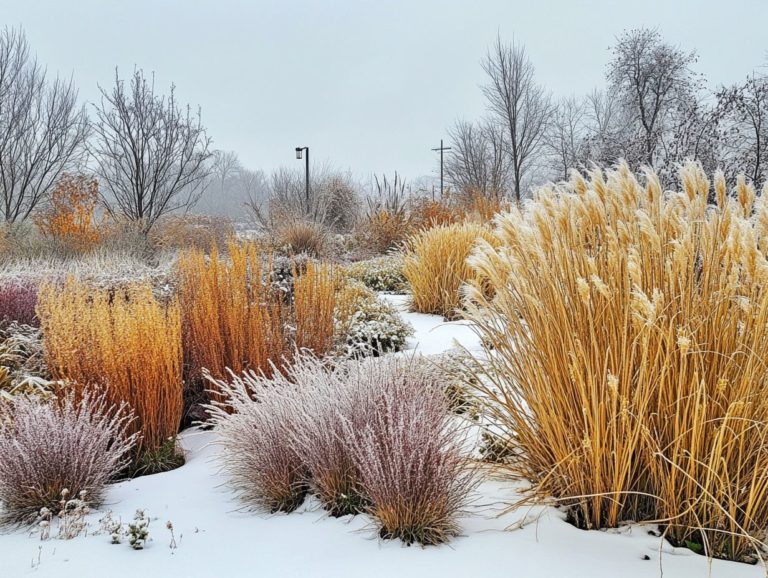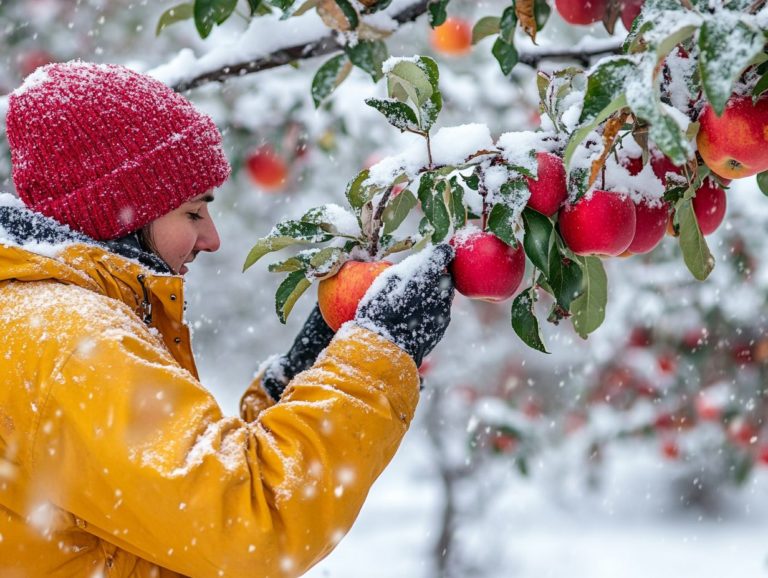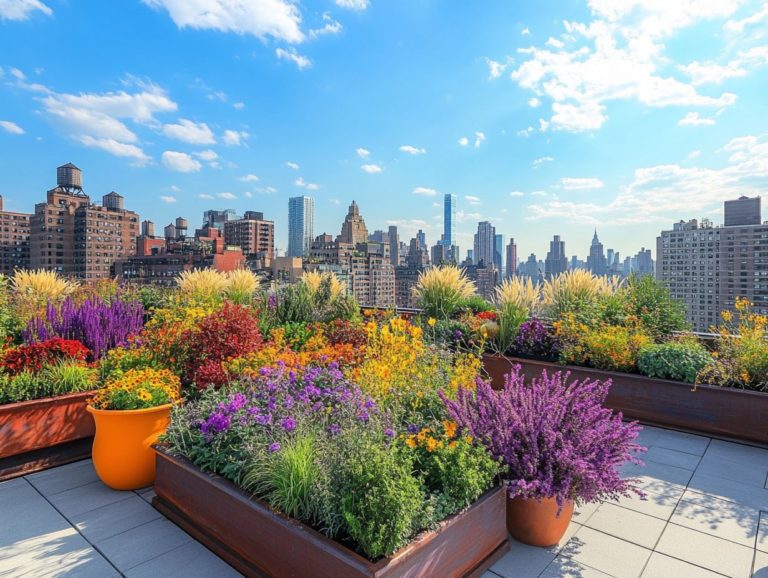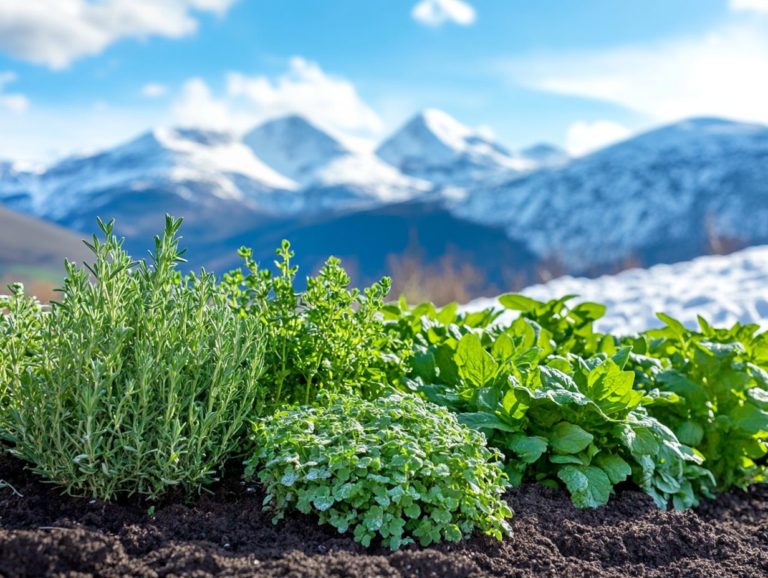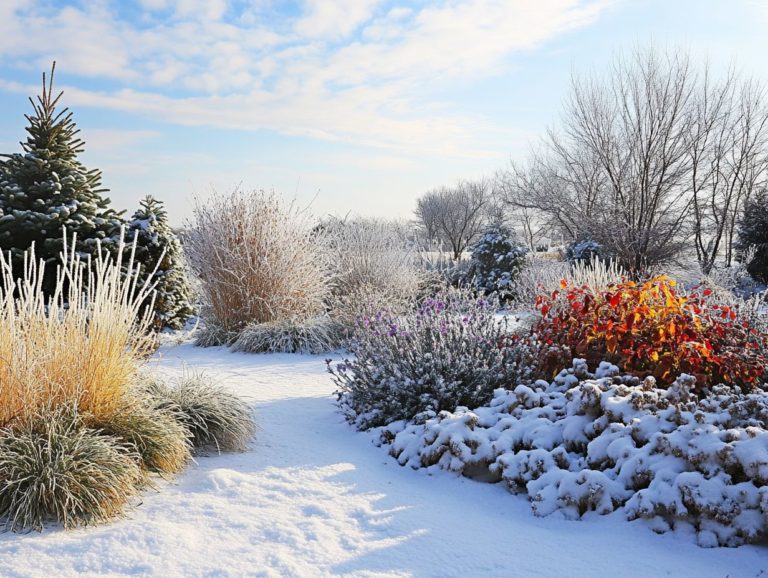Choosing the Right Soil for Cold-Climate Plants
Understanding cold-climate plants is crucial for gardening success. This is especially true in challenging environments like Southeast Wyoming.
These resilient plants have unique traits that help them thrive despite temperature fluctuations. Consider key aspects like plant hardiness zones, frost dates, and local needs like soil drainage and moisture retention.
Incorporating season extenders, such as protective trees and greenhouses, will elevate your gardening endeavors. Choosing heirloom seeds and well-suited varieties, like the currant bush, will significantly improve your garden.
Contents
- Importance of Choosing the Right Soil
- Key Takeaways:
- Types of Soil Suitable for Cold-Climate Plants
- Factors to Consider When Choosing Soil
- Preparing and Maintaining the Soil
- Common Mistakes to Avoid
- Frequently Asked Questions
- What is the importance of choosing the right soil for cold-climate plants?
- What type of soil is best for cold-climate plants?
- How can I determine if my soil is suitable for cold-climate plants?
- Can I amend my existing soil to make it suitable for cold-climate plants?
- Are there specific nutrients important for cold-climate plants?
- Should I use mulch around my cold-climate plants?
Characteristics and Growing Conditions
Cold-climate plants showcase remarkable characteristics that allow them to thrive in harsher growing conditions, including cool temperatures and fluctuating light levels.
These adaptations often result in a shorter growing season and resilience to withstand frigid temperatures that would discourage less hardy species. Many of these plants have developed specialized root systems that enhance nutrient uptake in the often poor soils typical of colder regions.
Local environmental factors, such as sunlight duration and soil drainage, play a pivotal role in their development. The balance between moisture levels and organic matter significantly influences their growth patterns.
By thriving in well-draining soils rich in organic matter, including compost, these plants maximize their photosynthetic capabilities during the brief warmth of summer.
Importance of Choosing the Right Soil
Selecting the ideal soil is essential for the vitality and productivity of cold-climate plants. Understanding soil needs for cold-climate plants plays a pivotal role in their growth, nutrient absorption, and resilience against diseases, which is essential for the overall health of your garden.
Key Takeaways:
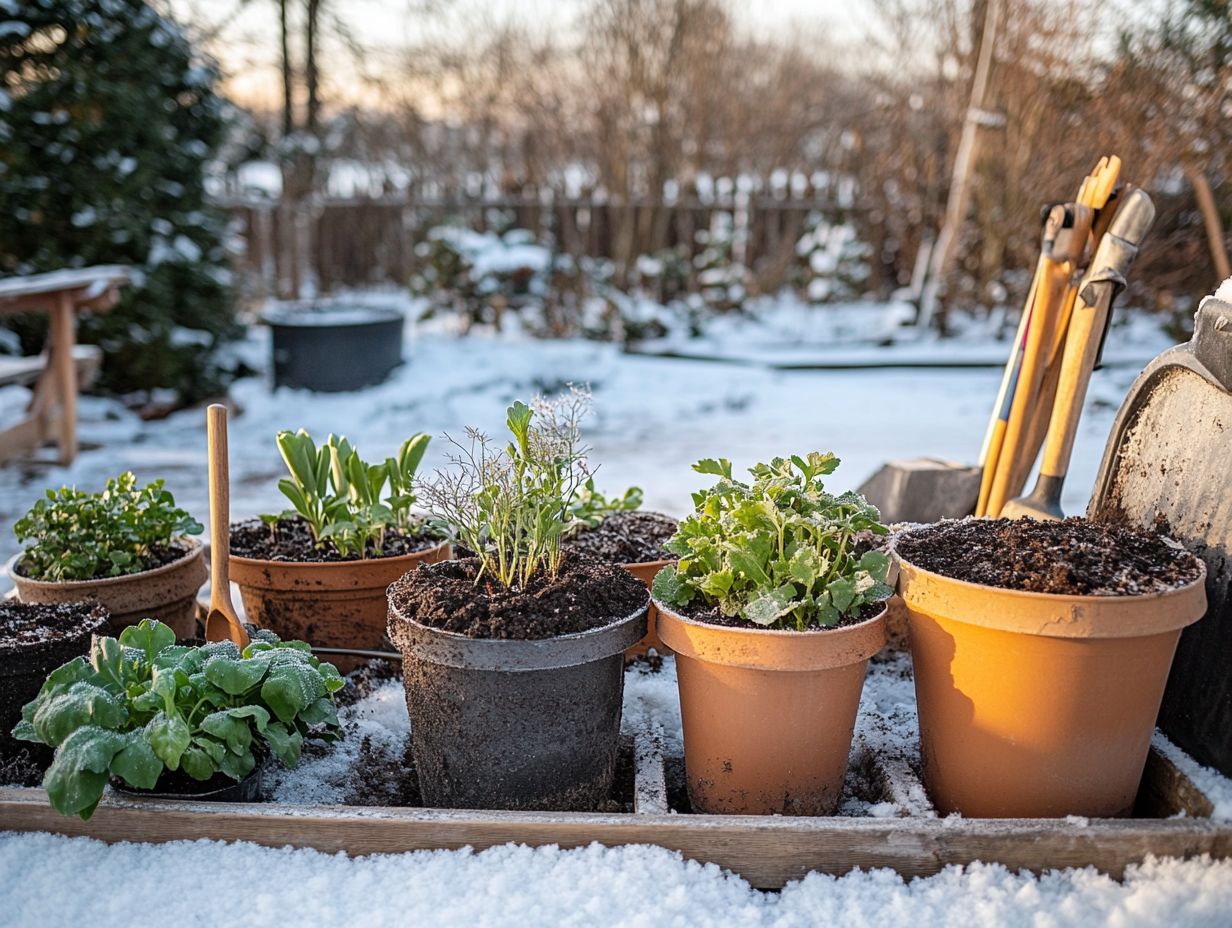
Impact on Plant Growth and Development
Soil profoundly impacts your plants’ growth and development. It influences moisture retention and nutrient availability, which are crucial for thriving in cold climates. For effective gardening, consider understanding plant selection for cold-climate design.
Different soil types, like sandy and clay soils, affect how well your plants grow. Sandy soils drain water well but often struggle to retain moisture and nutrients.
In contrast, clay soils hold moisture effectively but can become compacted, limiting root growth. Understanding these characteristics helps you choose the right soil mix for your plants.
Consider practices like soil testing to ensure your plants receive the required moisture and nutrients for optimal growth.
Types of Soil Suitable for Cold-Climate Plants
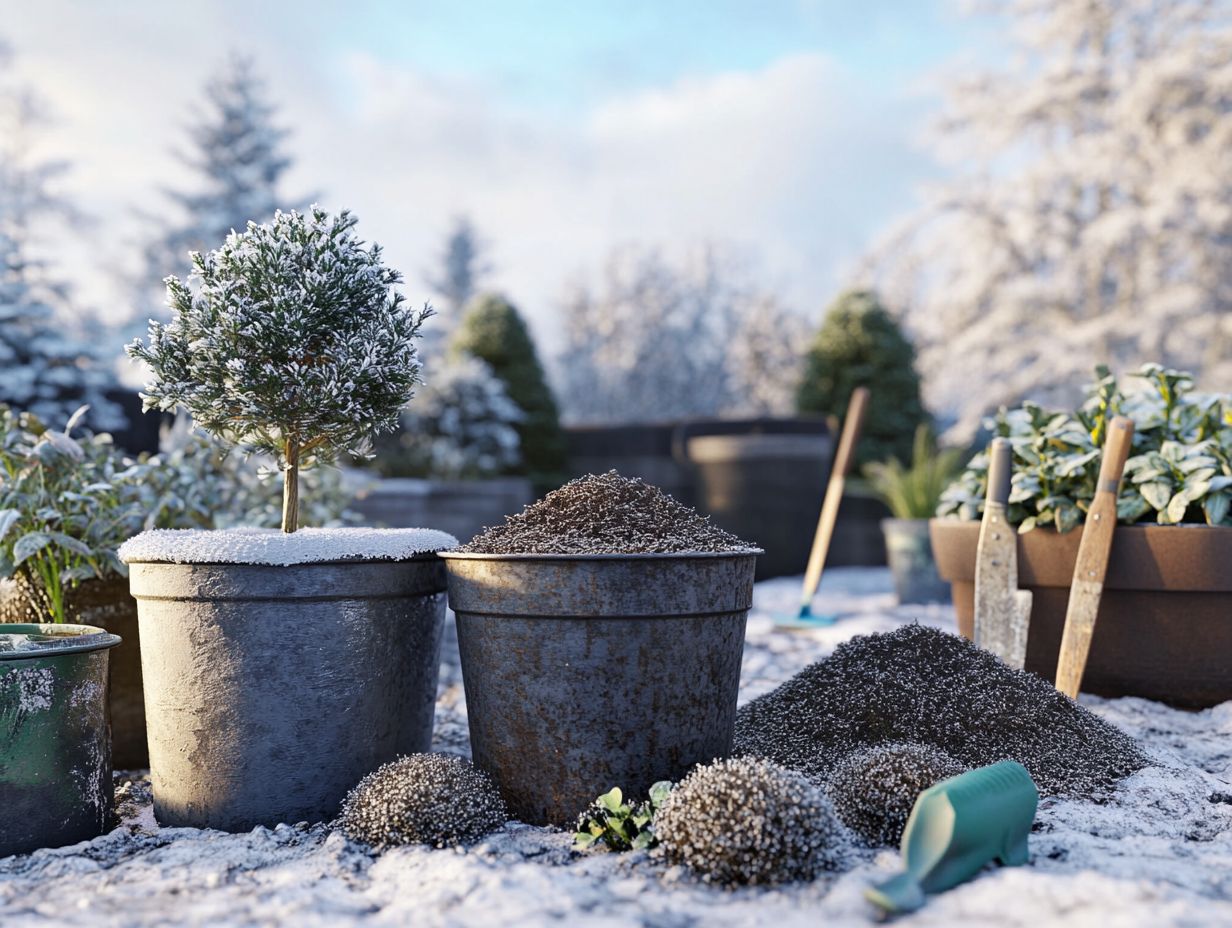
Choosing the right soil for your cold-climate plants is crucial. For guidance, check out how to select the right soil for cold gardens, as this choice ensures excellent drainage and creates an ideal environment for growth in raised beds.
Identifying the Best Soil Composition
Finding the ideal soil composition for cold-climate plants requires understanding the balance between organic matter and soil texture. For more insights on this topic, check out how to choose the right soil for winter gardening. This balance enhances moisture retention, vital for successful gardening.
Organic matter improves soil structure, allowing superior water infiltration and retention. Soil texture, which refers to the proportions of sand, silt, and clay, determines how quickly moisture is absorbed.
Loamy soils, rich in organic content, are ideal for many plants, including heirloom seeds. They maintain moisture while ensuring excellent drainage.
Incorporate practices like mulching with organic materials and using cover crops to enrich your soil. These methods create a thriving environment for your plants, leading to vibrant growth.
Factors to Consider When Choosing Soil
When selecting soil for cold-climate gardening, consider the local climate, drainage capabilities, and specific nutrient needs of your plants. Additionally, selecting the right containers for cold-climate plants is crucial for ensuring a thriving garden.
Climate, Drainage, and Nutrient Needs
Understanding the interplay between climate, drainage, and nutrient needs is essential. This knowledge ensures your plants receive the support they require.
Choosing the right soil type enhances moisture retention, especially in harsh winter regions like Southeast Wyoming. Wet conditions can lead to root rot, so be mindful of drainage capabilities.
Nutrient needs vary among plants. Enrich your soil with organic matter, such as compost, to create a balanced ecosystem. This promotes robust growth and prevents issues like root rot.
Preparing and Maintaining the Soil
Preparing and maintaining the soil is essential for your plants’ success. This process includes adding soil amendments, enriching compost, and implementing effective weed control strategies.
Steps for Proper Soil Preparation and Maintenance
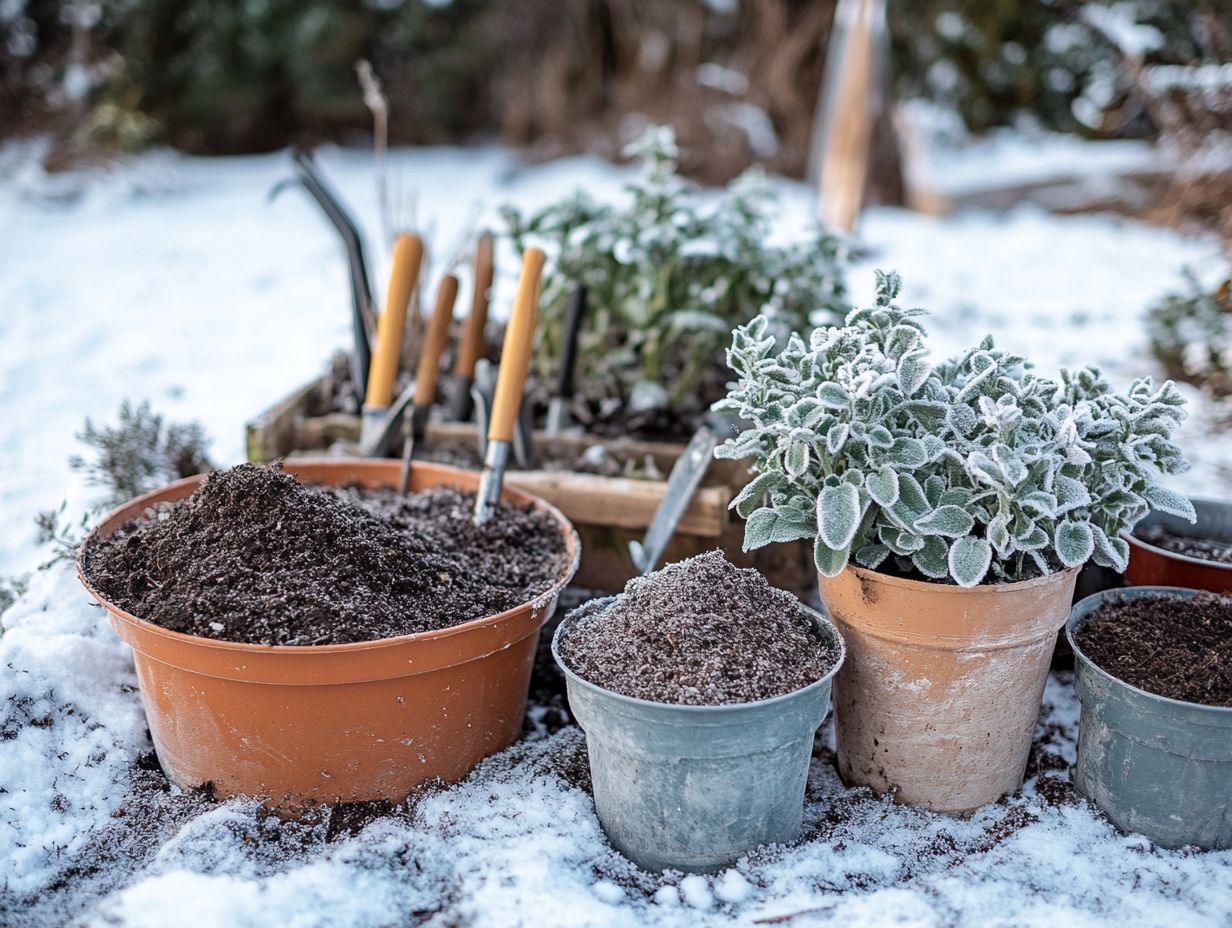
Proper soil preparation and maintenance are crucial practices in cold-climate gardening. Additionally, selecting plants for cold climate community gardens lays the groundwork for the long-term health and productivity of your garden.
By dedicating time to enrich the soil before planting, you create an optimally balanced environment where your plants can truly thrive. Start by testing the soil s pH and nutrients to get a clear picture of its existing composition.
Incorporate well-rotted compost or other organic matter to enhance moisture retention and deliver essential nutrients. Consider adding amendments like bone meal or greensand to elevate phosphorus and potassium levels. This will improve your chances of success in your garden zone.
Throughout the growing season, regular mulching conserves moisture and suppresses weeds. This ensures the soil remains healthy and rich in organic material while protecting your plants from cold injury. This approach promotes robust growth and maximizes productivity in your garden.
Common Mistakes to Avoid
Avoiding common mistakes when selecting soil for cold-climate plants is crucial for your success. Understanding what is the best soil for cold-climate gardens can prevent missteps that result in poor nutrient balance or root rot, jeopardizing the health of your plants.
Potential Pitfalls in Choosing Soil for Cold-Climate Plants
When selecting soil for cold-climate gardening, be aware of pitfalls such as inadequate drainage or insufficient nutrients. To enhance your gardening success, refer to this guide to choosing mulch for cold-climate plants, as these factors can significantly hinder plant growth.
In frigid regions, where temperatures can drop dramatically, choosing the wrong type of soil might lead to waterlogging, stunted plants, or even root rot during thawing periods. It’s crucial to understand how to choose the best potting mix for cold gardens to ensure healthy growth.
Poor nutrient content restricts your ability to cultivate healthy, fruitful plants. To navigate these challenges, prioritize soils that promote proper drainage while also retaining essential nutrients. Incorporating organic matter, like compost, dramatically enhances both the structure and fertility of your soil.
This creates a more robust growing environment that supports seasonal care for your plants. Assess your soil composition and make informed amendments to create a flourishing garden, even in the harshest climates. Utilize techniques like crop rotation and protective trees for enhanced growth.
Frequently Asked Questions
What is the importance of choosing the right soil for cold-climate plants?
Choosing the right soil is crucial as it provides the necessary nutrients and structure for plants to thrive in harsh conditions, especially in areas like Wyoming with significant temperature fluctuations.
What type of soil is best for cold-climate plants?
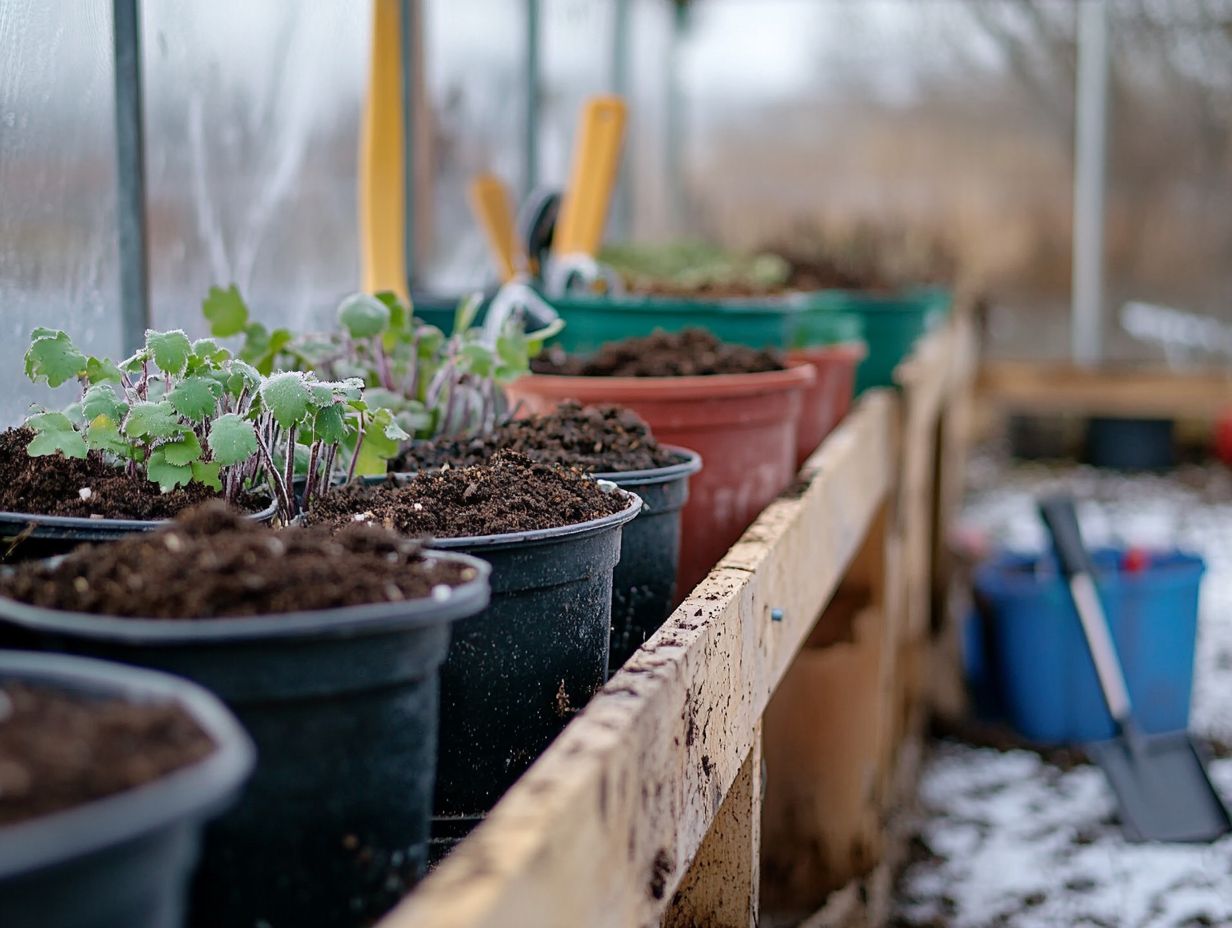
Well-draining, loamy soil with high organic matter, such as compost, is ideal for cold-climate plants. For tips on choosing the right varieties, consider selecting cold-climate plants for urban gardens. This soil type holds water perfectly while allowing for proper drainage and aeration, essential for plant growth.
How can I determine if my soil is suitable for cold-climate plants?
You can conduct a simple soil test to determine the pH balance and nutrient content, vital for understanding your garden soil’s health. Cold-climate plants typically prefer slightly acidic soil with a pH level between 5.5 and 6.5.
Can I amend my existing soil to make it suitable for cold-climate plants?
Absolutely! Adding organic matter, like compost or aged manure, improves the structure and nutrient content of your soil. This enhances moisture retention and prevents issues like root rot. You can also adjust the pH level by adding lime or sulfur.
Ready to start your cold-climate garden? Let s dive into the next steps!
Are there specific nutrients important for cold-climate plants?
Cold-climate plants need a balance of essential nutrients like nitrogen, phosphorus, and potassium. Heirloom seeds thrive in specific conditions, so it’s critical to ensure your soil has enough calcium, magnesium, and sulfur for their growth.
Should I use mulch around my cold-climate plants?
Yes! Mulching is highly recommended for cold-climate plants. Organic mulches like straw or shredded leaves help control weeds, insulate the soil, and retain moisture.

